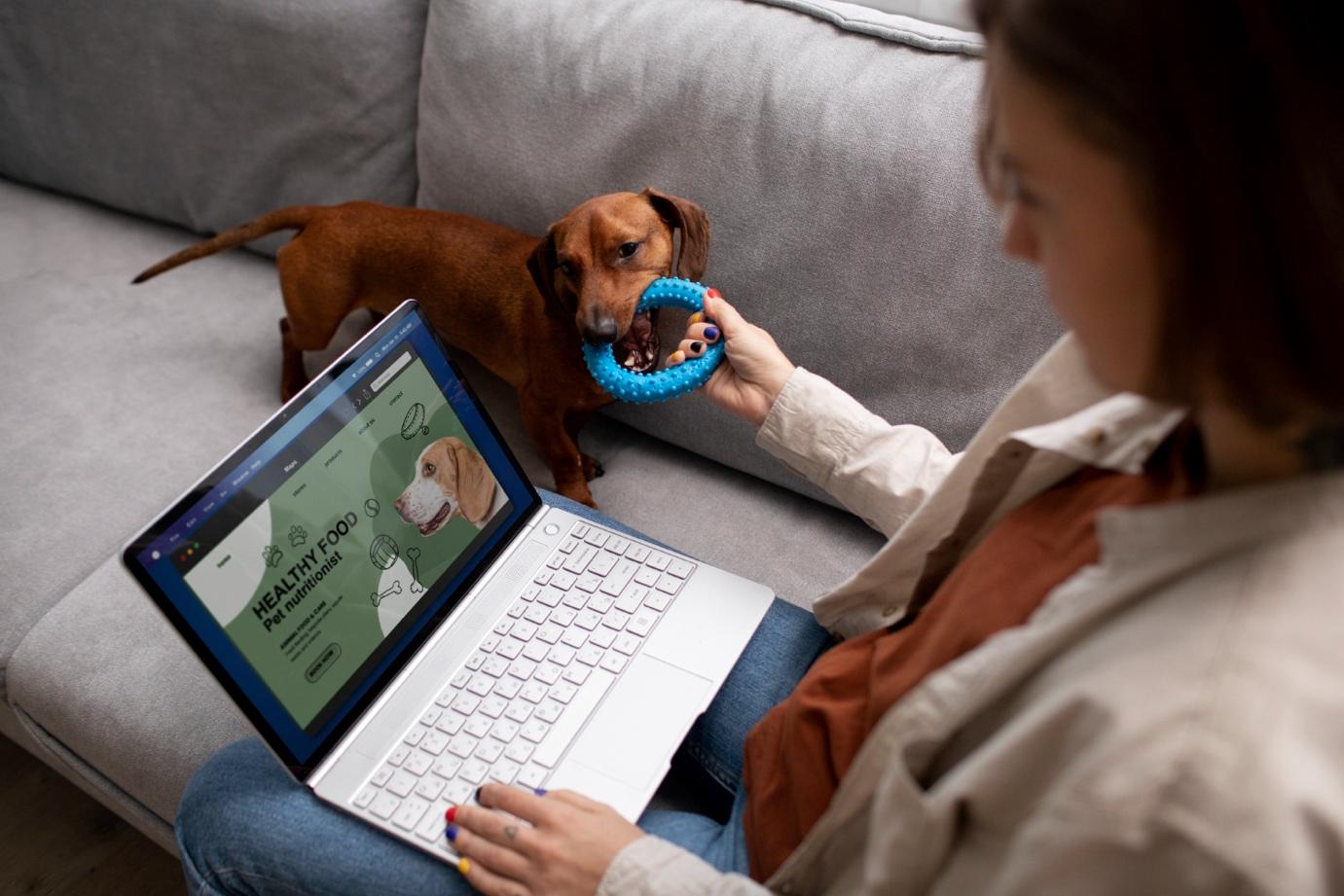Enhanced Outbound Communication for Pet Care: Pre-Visit Instructions & Regular Check-Ins
The veterinary clinic staff is often actively indulged in various client-facing communication tasks, such as:
- Communicating diagnosis and treatment plans with clients
- Educating clients on preventive care and pet health management
- Provide clear post-treatment instructions and follow-up guidance
- Handle appointments, billing, and concerns professionally and respectfully
All these mentioned tasks are a crucial part of vet clinics for maintaining trust, loyalty, and long-term client retention. An effective “To and From” structured communication strategy is necessary to keep the various vet care operations running smoothly (especially before and after the scheduling period), while also delivering a smooth client experience.
This article explores how Voice AI outbound calls for veterinary practices that can improve both operational efficiency and pet care for veterinary clinics.
The Role of Outbound Communication in Veterinary Care
With a dynamic human-like tone (i.e. personalized and empathetic), and proactive automated communication, SeaChat Voice AI Outbound Calls for Veterinary Practices is a game changer for clinics to deliver quality pet care services.

What are the Key Benefits to Using SeaChat Voice AI?
1. Enhancing Trust and Transparency
Proactive personalized outreach by pet care clinics (be it post-visit precautionary suggestions, medicine reminders, etc) triggered at specific client activities such as clinic visits, reflects a feeling of care for their pets.
Also sharing regulatory education material with clients promotes genuine trust and helps in building a stronger bond with clients.
2. Improving Pet Heath & Compliance
Whether it’s about fasting instructions for a pet before anesthesia, bringing a stool sample for diagnostics, or administering prescribed medications correctly, prior interactions with the clients on the various time-stamps improve overall compliance and reduce pet care errors.
Clear guided instruction to pet parents such as medicine reminders or vaccination appointments, also improves the overall health of a pet with quality pet care service.
3. Increasing Retention and Long-Term Value
A healthy pet requires regular checkups and vaccinations. Outbound communications instructing clients in between their pet visits, along with regular checkup reminders, help in adherence to preventive care schedules, which are critical for long-term pet health.
For example, a routine reminder for parasite prevention may prevent the onset of any tick-borne diseases or intestinal parasites beforehand, thus improving pet health.
Implementing Pre-Visit Instructions
Automated pre-visit instructions to clients are a very simple yet effective way to reduce the administrative burden and increase the quality of veterinary services.
Due to a lack of preparation, clients often forget special instructions such as fasting requirements or collecting required samples or medical history records before a visit, which causes delays or even missed appointments.
Structured and clear timely reminders or pre-visit instructions, personalized for each client, will help clients know beforehand to know – what, when, & how – of the appointment’s SOPs reducing errors, improving compliance, and minimizing same-day cancelations.
What are different methods to channel outbound communications to appeal to various types of client’s preferences?
1. Automated Voice Calls
Advanced tools for voice AI outbound calls for veterinary practices, such as SeaChat Voice AI are capable of delivering pre-visit voice call instructions in natural, human-like personalized conversational tones. These calls are particularly effective because:
- Highly interactive (e.g., clients can confirm receipt or request a call-back).
- Dynamic in nature, as the AI algorithms are trained on Natural Language Models.
- Highly Customizable, based on the clinic’s requirements.
- Allow scalability as your clinics grow, without added staff time.
- Minimizes missed calls, while also reducing any human errors in the scripting.
- High engagement rate, as voice calls are often preferred by clients compared to emails, or SMS.
- Fallback protocols (in case of an unanswered call, the system can retry later or automatically send a follow-up SMS).
2. SMS Reminders
Text messages are excellent for reinforcing key instructions, as they’re short, direct, and easy to reference. For example, a pet care clinic might send a message like:
Reminder: Max must not eat after 9 PM tonight before his dental cleaning tomorrow at 10 AM. Water is okay.
Usually, SMS is preferred for quick follow-up messages or last-minute alerts.
3. Email Follow-Ups
When you need to share detailed instructions, with guided materials, outbound emails are a great choice! Clinics can create customized templates, with pet names, appointment types, and vet recommendations pulled directly from the database, which will be triggered based on the client’s recent activities.
By integrating these channels, pet care clinics will be able to reduce both stress for clients and the administrative burden.

Conducting Regular Check-Ins
Conducting regular check-ins is a critical part of monitoring a pet’s health for a veterinary clinic. It involves:
- Detect early complications (e.g., swelling, infection).
- Clarify meds and care instructions.
- Prompt updates for behavior or appetite.
- Reinforce treatment compliance.
- Reduce client anxiety.
- Prevent emergency rechecks.
A reminder for check-in can prompt the client to visit the clinic for post-recovery or correcting mistakes or even re-engage a disengaged client before it affects the pet’s health progress. This also boosts the client’s confidence and builds trust, leading to higher client satisfaction and retention.
As mentioned earlier, various channels, such as personalized calls, text messages, or chatbot interactions are very effective in automating check-in reminders.
Leveraging Technology for Efficient Communication
Integrating AI agents for voice AI outbound calls for veterinary practices allows pet care clinics to automate routine tasks such as follow-ups, appointments, post visit guidance, among others. These tools securely fetch real-time information from the clinic’s database about clients’ details, pets’ history, and previous communications to actively personalize and deliver timely and accurate information around the clock.
For instance, SeaChat Voice AI can be programmed to automatically initiate a call two-days prior with personalized pre-op instructions (i.e. such as fasting guidelines or medication pauses), that are specially targeted based on the pet profile and procedure.
Similarly, a Voice Ai agent embedded on the veterinary clinic’s website or sent via SMS can assist clients post-visit by answering frequently asked questions like “Is it normal for my cat to sleep all day after receiving anesthesia?” or “How do I clean the wound site?”.
Because the Voice Ai agent pulls context from the pet’s recent appointment, its responses are accurate and personalized.
There are a few specialized tools for voice AI outbound calls for veterinary practices, such as SeaChat voice AI that can be channelized into the following integrations to handle routine inquiries and provide timely information:
- Website voice AI agent
- SMS automation
- Voice AI outbound calls
- check-in data sync
- WhatsApp auto-responses
In summary, integrating structured outbound communication in outdated veterinary communications models brings many benefits, such as:
- Reduced complications and readmissions
- Improved compliance with care instructions
- Higher client retention and referrals
- Stronger reputation for attentive care
If the idea of voice AI outbound calls for veterinary practices sounds interesting, we highly suggest you book an appointment with our experts at SeaChat Voice AI to get a real-time hands-on demo today!
SeaChat Voice AI aims to improve the quality of veterinary services by revolutionizing the way clients and vet clinics communicate, for a high client retention rate, and a long-term satisfactory relationship.